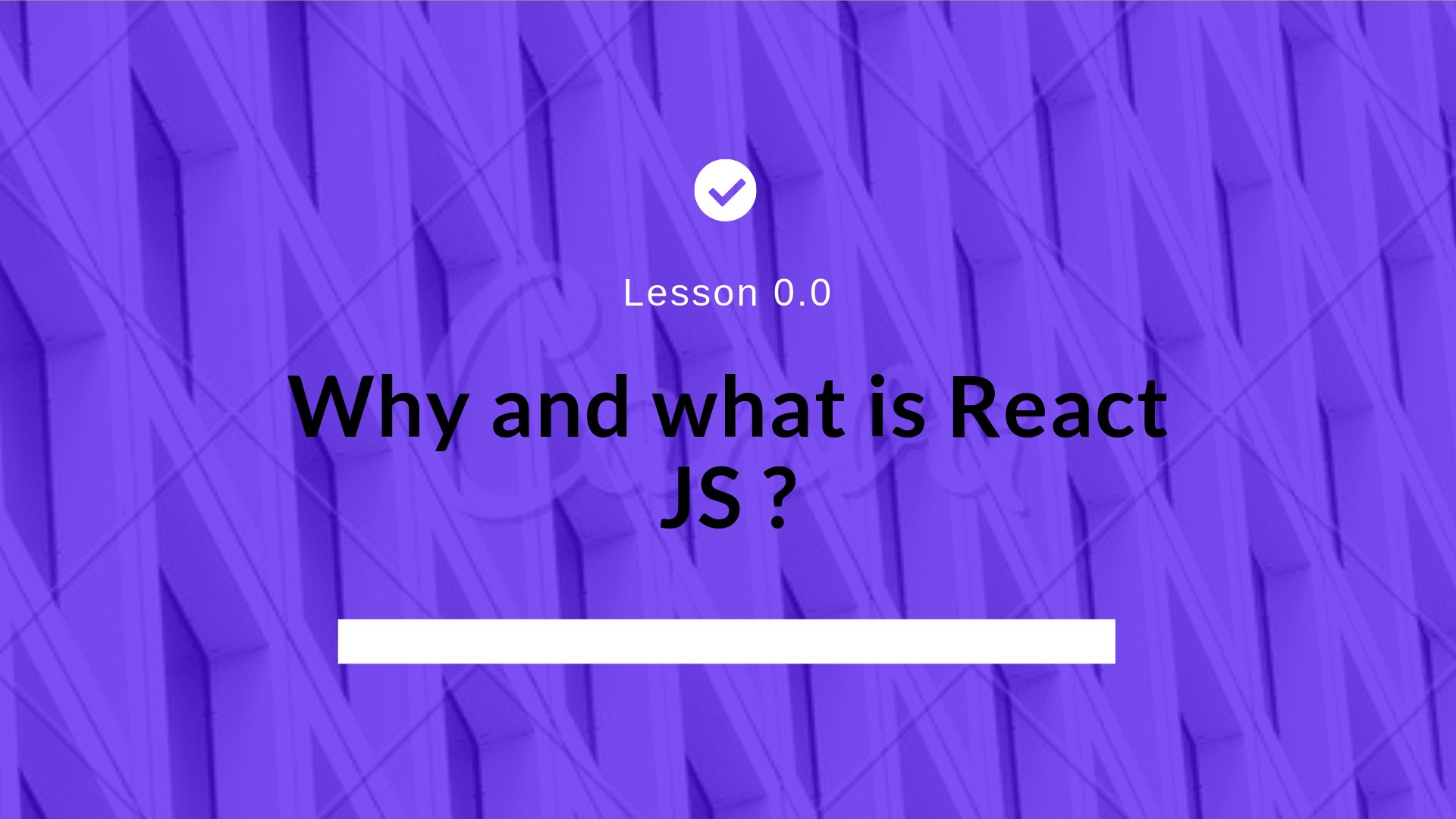What is React.js?
React.js is an open-source JavaScript library that is used for building user interfaces and specifically for single-page applications. It’s also used for handling the view layer for web and mobile apps also. And React also allows us to create reusable UI components that make our application awesome. It was firstly created by Jordan Walke, a software engineer working for Facebook. React first comes on Facebook’s newsfeed in 2011 and on Instagram in 2012. After that, there is a huge growth in its users. Its strength comes from the focus on individual components only.
Instead of working on the entire web app, ReactJS allows the developer to break down the complex UI into simpler components to make a healthy environment of developing and coding settings. React allows developers to create large web applications that can change data, without reloading the page and by just routing.
The main purpose of React is to be fast, scalable, useable, and simple. It works only on user interfaces in the application. It can be used with a combination of other JavaScript libraries or frameworks, such as Angular JS in MVC, Vue. React JS is also known as React or React.js.

What are the React Features?
Let us take a closer look at some important features of React js which makes it much compatible and famous. By understanding these features we will know why react is a much-growing library nowadays.
1.JSX (an JavaScript extension)
At the heart of any basic website are HTML documents. It allows developers to write their apps within JavaScript-only means no need of HTML,CSS, etc. JSX is one of the best features that not only make ReactJS easy but fun too. Developers can easily make a new UI feature and see it appear in real-time gesture. Web browsers read these documents and display them on your computer, tablet, or phone as web pages.
During this process, browsers create something called a Document Object Model (DOM), a representational tree of how the web page is arranged. Developers can then add dynamic content to their projects by modifying the DOM with languages like JavaScript or typescript.
This is not just a matter of convenience, though—using JSX to update a DOM leads to the significant site performance improvements and development efficiency of the project. How? It’s all about the subsequent React feature, the Virtual DOM.

2.Virtual DOM
It uses Virtual DOM that makes the app super fast. When the ReactJS was crafted, the designers rightly predictes that updating old HTML would become expensive. Therefore, the thought of Virtual DOM helps allows ReactJS to understand when exactly to re-render or when to ignore some specific pieces of DOM because it can detect when the data has changed. A UI that reacts promptly is crucial in enhancing the user experience. I
If you’re not using React JS (and JSX), your website will use HTML to update its DOM (the process that creates things “change” on screen without a user having to manually refresh a page). This works fine for easy, static websites, except for dynamic websites that involve heavy user interaction it can become a drag (since the whole DOM must reload every time the user clicks a feature calling for a page refresh).
However, if a developer uses JSX to control and update its DOM, React JS creates something called a Virtual DOM. The Virtual DOM is a copy of the site’s DOM, and React JS uses this copy to see what parts of the actual DOM need to change when an event happens like the user did some command.
Let’s say a user enters a comment in the post and press the “Comment” button. Without using React JS, the entire DOM would have to update to reflect this change (this type of action requires too much amount of time and user internet). React, on the other hand, scans the Virtual DOM to see actually what change after a user action (eg.comment being added) and selectively updates that section of the DOM only.
This type of action much useful and required for complex and huge applications.
3. React Native
React has native libraries that were announced by Facebook in 2015, which provides the react architecture to native applications for IOS, Android, and UPD.
React-native may be a mobile apps building framework using only Javascript. It uses an equivalent design as React, letting you utilize/include an upscale mobile UI library/ declarative components. It uses an equivalent fundamental UI building block as regular iOS and Android apps. The best part of using react-native is to allow/adopt components written in Objective-C, Java, or Swift which makes it easy to handle.
With React you build a true mobile app that’s indistinguishable from an app built using Objective-C or Java. React Native uses the same fundamentals UI building blocks as regular iOS and Android apps. You just put those building blocks together using JavaScript and React to make awesome mobile applications.

Pros and Cons of React!

Should I Learn React JS?
If you want to work as a front end web developer (which means building UIs, single-page applications), the answer is YES!!!
Finding success in web development means using the right tools to make your code as effective and efficient as possible. And—when it involves building user interfaces—React JS may be a tool you would like to understand the way to cash in of.
Probably, no web framework took as less time as React JS to be a number one within the front-end development. It has only been four years since React JS was a part of open-source. In this short span of your time, React JS has been one of the foremost used JavaScript frameworks and growing rapidly in its path. And no doubt it will grow more in the upcoming times.
Most of the online development companies are building interactive web applications with React JS due to its useful features. The following are some examples of highly demanded companies that use React Js.





